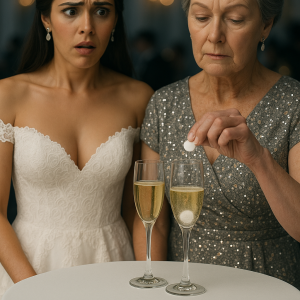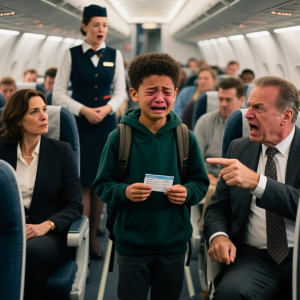
The sharp scent of burning fuel cut through the evening air on Route 19.
Elijah Brooks, a 34-year-old auto technician from Charlotte, had just clocked out when he spotted a compact black sedan smashed against a guardrail, flames already flickering beneath the hood. Without a second thought, he pulled over, grabbed the fire extinguisher from his truck, and ran toward the wreck.
Inside was a teenage girl, maybe sixteen, unconscious with her head against the airbag. “Hey! Can you hear me?” Elijah shouted, but she didn’t respond.
The fire was spreading.
He shattered the window with his elbow, unlocked the door, and dragged her out just as the car erupted into flames behind them. He laid her on the grass, checked her pulse—she was alive. He exhaled in relief.
That’s when sirens screamed. Two police SUVs swerved to a stop. Before Elijah could speak, one of the officers—a white man named Officer Grant—jumped out with his weapon drawn.
“Step away from her! Hands up!”
Elijah froze. “I just pulled her out—”
“On the ground! Now!” Grant barked.
Elijah was forced down, cuffed hard. The second officer, a woman named Perez, called in a report: “Possible kidnapping or attempted theft.”
People who had pulled over to watch were filming. The scene looked damning: a Black man near a wrecked car and an unconscious white girl.
Paramedics rushed to the girl. Elijah tried to explain, but his words were ignored. He was shoved into the back of a cruiser, the smell of smoke still clinging to him.
Hours later, at the hospital, he sat handcuffed in an interview room. Officer Grant paced aggressively.
“So you expect us to believe you just happened to be in the right place at the right time?”
Elijah’s voice stayed calm. “I did what anyone should have done. I saved her life.”

Grant scoffed, unconvinced. Perez avoided Elijah’s eyes. Then a nurse walked in and said softly, “The girl is awake.”
They escorted Elijah, still cuffed, to the ICU. The girl—Rachel Adams—lay weak but conscious. Her parents stood by her bedside, pale with worry. When she saw Elijah, her eyes widened and she pointed.
“That’s him!”
Grant stepped forward, ready to accuse—but Rachel continued, voice trembling, “That’s the man who saved me. He pulled me out before the fire.”
Silence fell over the room. Her mother burst into tears, thanking Elijah. Officer Perez immediately removed his handcuffs. Grant opened his mouth to speak, but nothing came out.
News cameras were outside by morning. A bystander’s video of Elijah rescuing Rachel—and then being arrested—had gone viral. Headlines called it a “heroism turned into profiling.” The police department issued an apology. Officer Grant was placed on leave.
Rachel and her family visited Elijah days later. She hugged him tight. “I remember opening my eyes and seeing you pull me out of the fire. You saved me.”
Her father added, voice breaking, “We’re sorry for what was done to you.”
Elijah replied simply, “I didn’t do it for recognition. I did it because it was the right thing.”
His act sparked a national conversation. Hashtags like #JusticeForElijah and #RealHero trended. Elijah was invited to community meetings, where he spoke quietly, not with anger, but truth.
“I don’t want revenge,” he said. “I just want to live in a world where saving a life doesn’t get mistaken for a crime because of the color of my skin.”
Rachel stood beside him at a youth rally, telling the crowd, “A uniform doesn’t determine who a hero is. Humanity does.”
By the end of the year, new training policies were introduced in the police department. Elijah returned to work, still humble, still kind. And whenever people stopped him on the street to thank him, he would smile and say, “Anyone can choose to do good. The question is—will you?”



